Carthage is an archaeological site in Tunisia, and a neighbourhood outside the capital Tunis. Today you can see the remains of what was once a powerful Phoenician empire in ancient times - before the Romans decided to raze the city to the ground - and later became a site of the Roman Empire.
Innehållsförteckning
The archaeological site of Carthage
According to tradition, the Phoenicians founded the city of Carthage in 814 BC, although they probably used the site even earlier. The city grew into a powerful trading centre of the Phoenician Empire, along with other Phoenician cities such as Hadrumetum, Kerkuan, Leptis Magna and Utica.
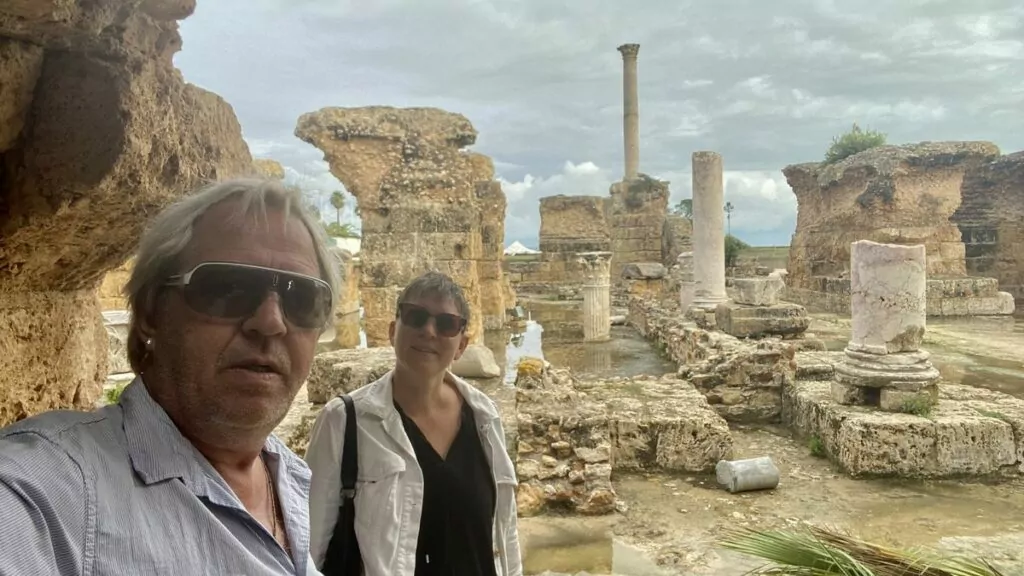
The success story lasted for over 600 years before the city was violently destroyed, and the ruins can still be seen today, just outside Tunisia's capital Tunis. Note that you only see the ground floor of the buildings, which were once much higher and more powerful.
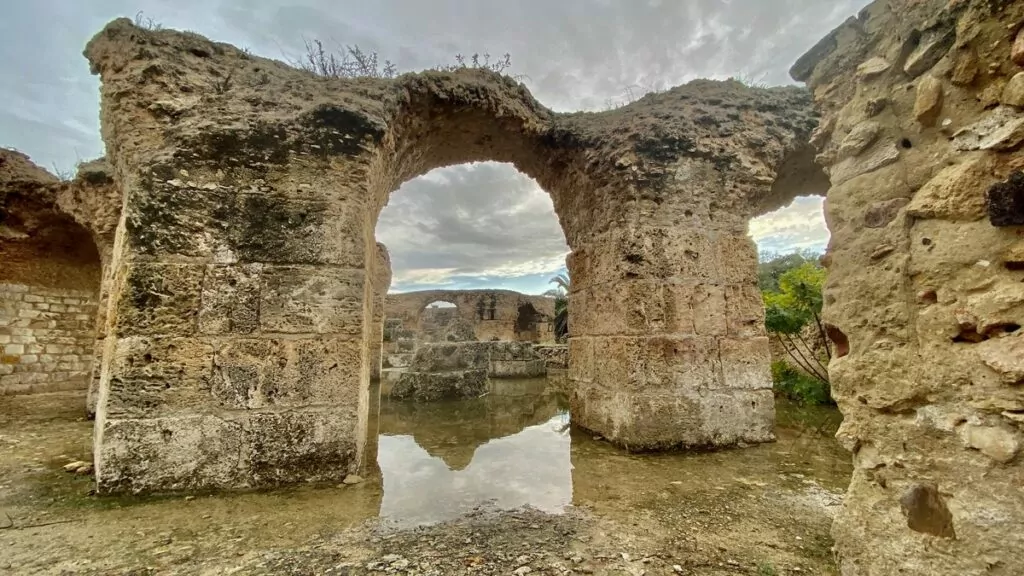
Carthage is located in northern Tunisia, just north of the capital Tunis, near the charming little blue and white town of Sidi Bou Said.
The rise and fall of Carthage - a dramatic story
After its creation, Carthage quickly became a commercial empire and political centre. From the beginning, the area was under the control of the Phoenician city of Tyros in present-day Lebanon, but soon Carthage became independent, with several subordinate Phoenician cities.
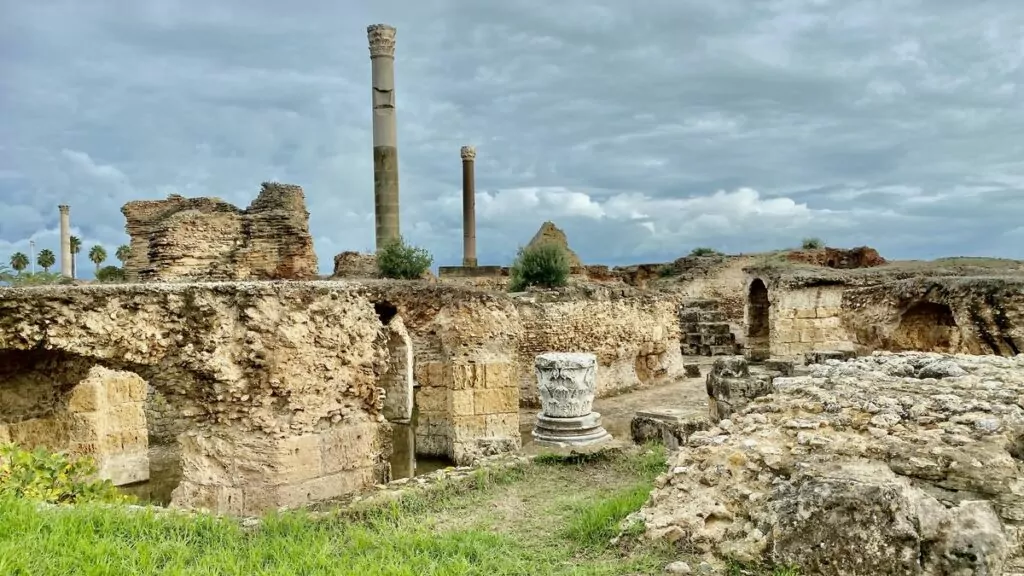
The city was in constant conflict with its neighbours, partly with the Greeks in Sicily, but above all with the powerful Romans. During the long Punic wars, Carthage occupied territories belonging to Rome, but the Romans retaliated with vigour.
Incidentally, I believe that Carthage should be destroyed.
Cato the Elder
Marcus Porcius Cato, often called Cato the Elder (234-149 BC) was a Roman statesman known for his opposition to Carthage. He is said to have ended all his Senate speeches with the words 'Ceterum/Praeterea censeo Carthaginem esse delendam' (By the way, I think Carthage should be destroyed) regardless of what else he was talking about.
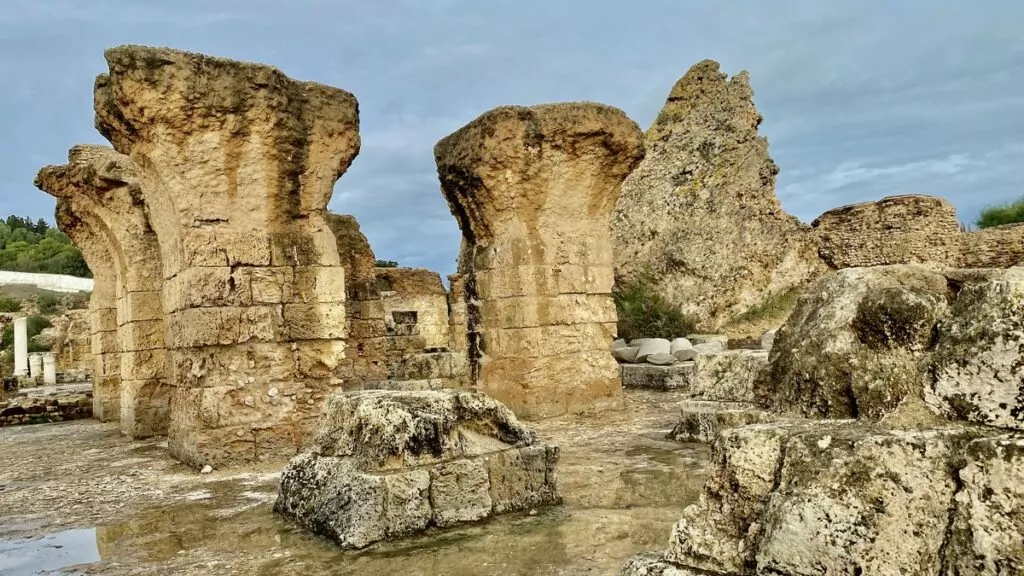
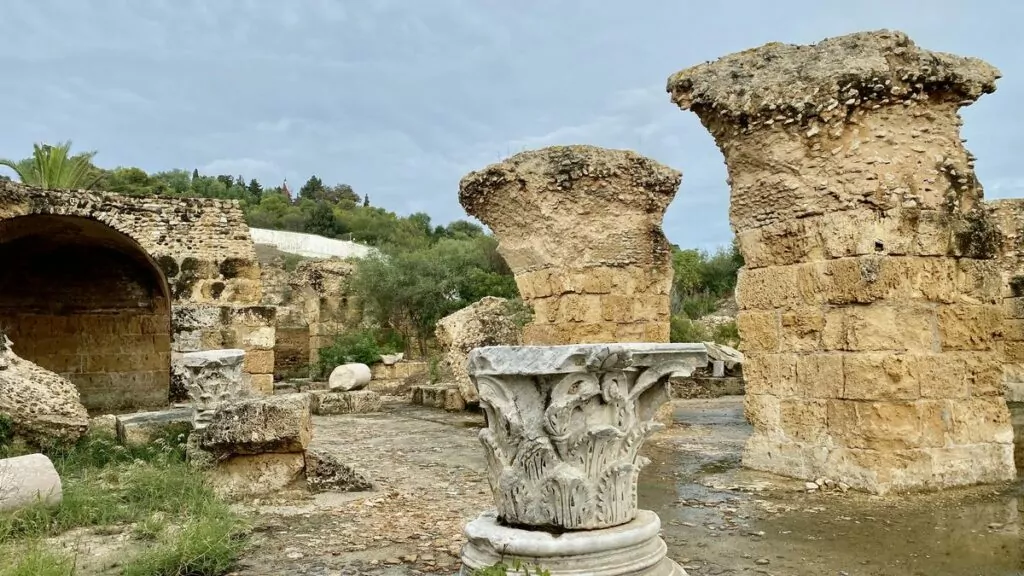
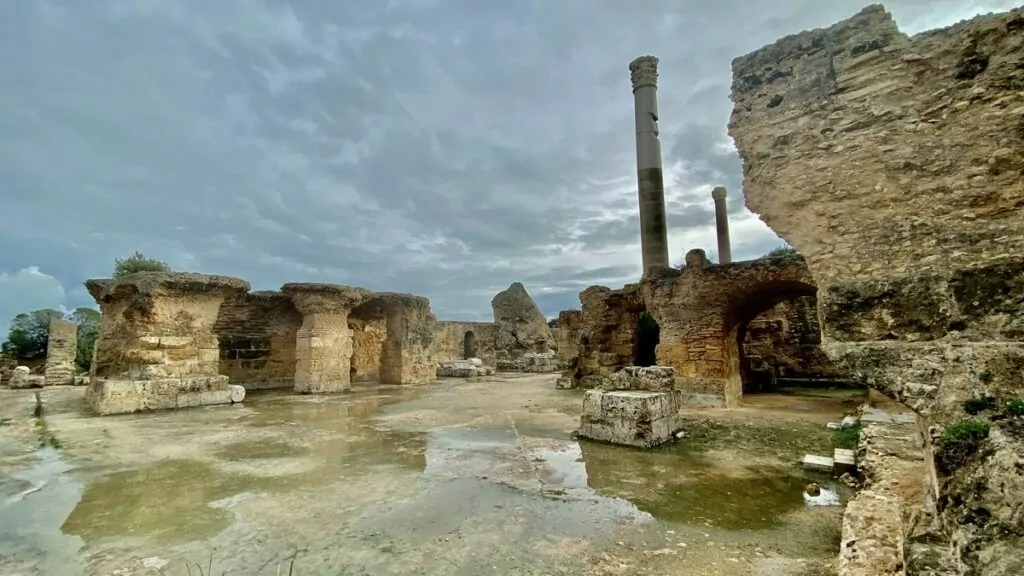
It was partly due to Cato the Elder that the Romans again declared war on Carthage in 149 BC, during the Third Punic War. The city was completely destroyed and the population was sold into slavery. The Romans then took over the city themselves. However, Cato himself did not live to see the final disintegration, as he died in the same year as the war broke out.
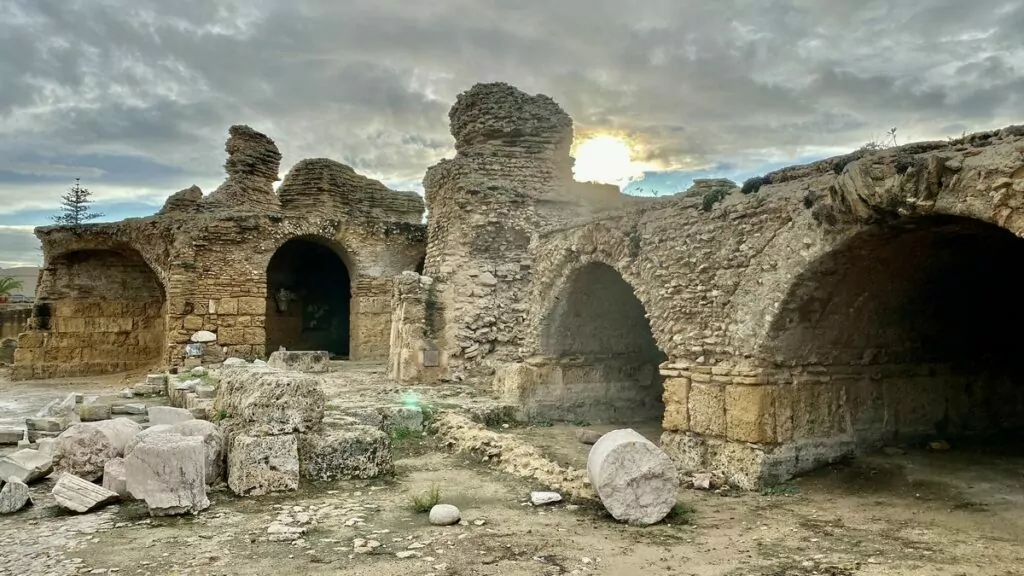
A Unesco World Heritage Site
The archaeological site of Carthage has been a UNESCO World Heritage Site since 1979. The site tells the story of several cultures and played a central role in antiquity, making it an important cultural and historical site for humanity.
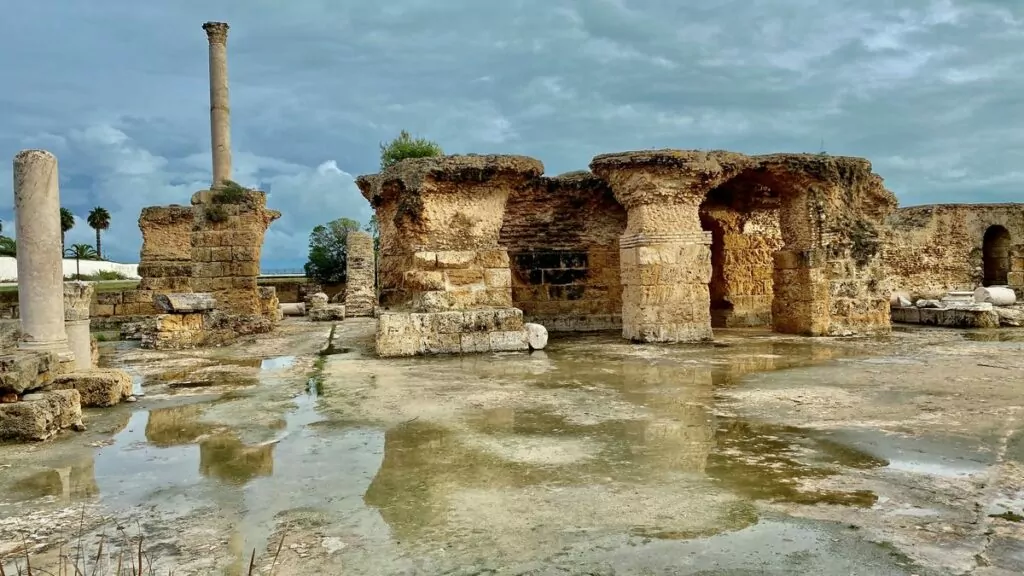
Visiting Carthage
If you're visiting Tunisia's capital Tunis, it's well worth taking a trip to Carthage, which is just outside the capital. Although this was a very powerful city in ancient times, the area is not too large and half a day can be enough to wander around the various ruins.
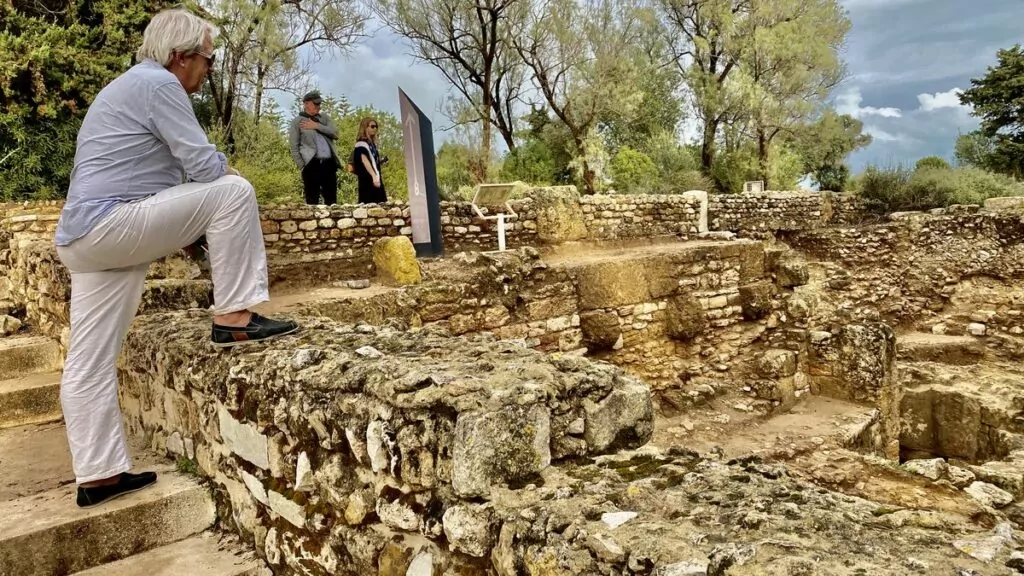
We spent most of our time at the Baths of Antoninus. Although only ruins remain, it is clear that this was once a very large bathhouse, in fact the largest outside of Rome. A drawing shows how the different rooms were once arranged, with hot and cold rooms, pools and exercise rooms. At that time, the building was much higher, and what you see today are the lower rooms, where mainly the servants were located.
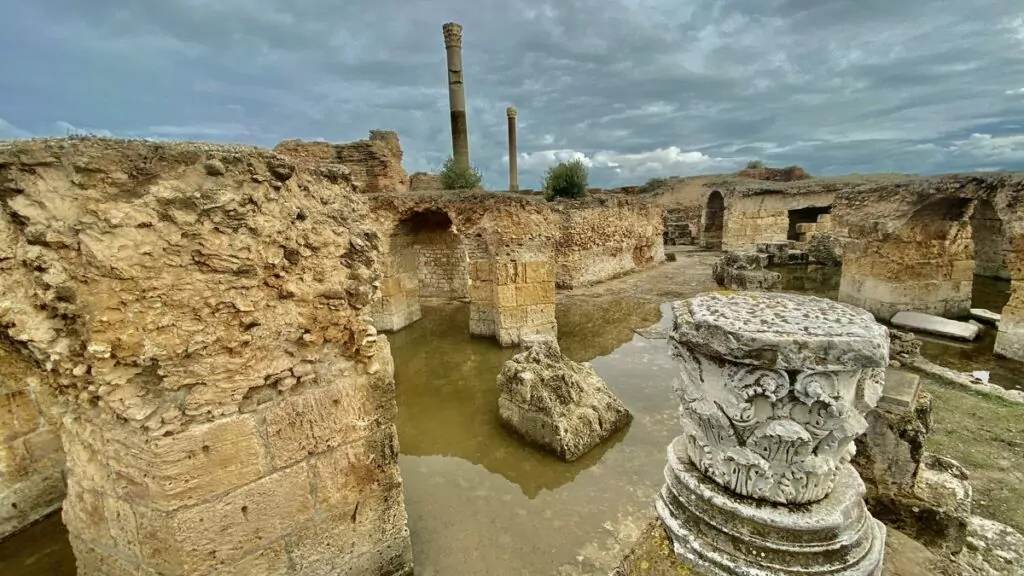
In addition to the bathhouse, there are several other interesting ruins on the site. For example, you can see the remains of an amphitheatre, a theatre, a cemetery, a tower and a residential area. Also nearby are an archaeological museum and The Acropolium, also known as Saint Louis Cathedral.
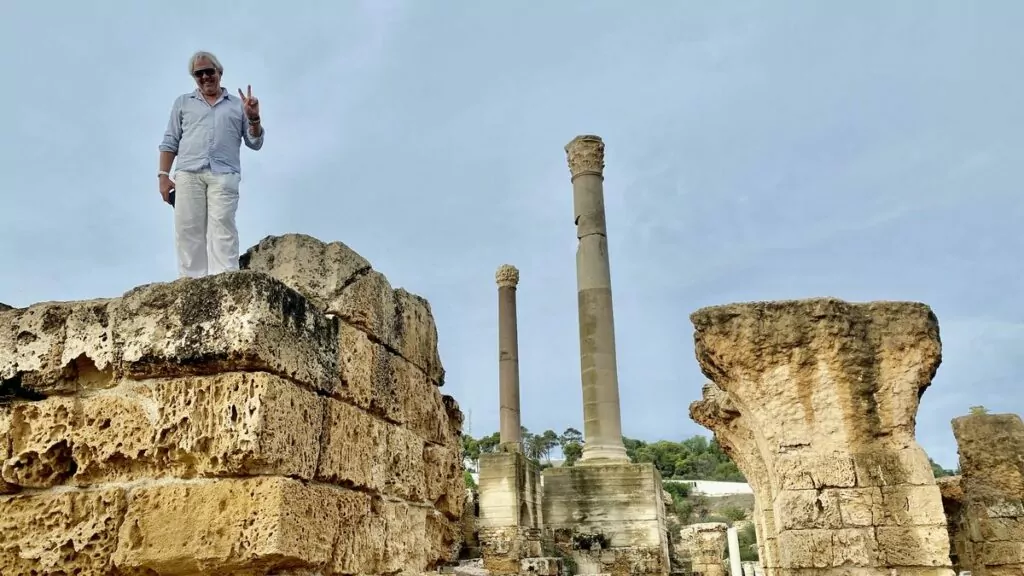
Film from Carthage
Here you can also watch a film from Carthage, edited by Peter.
The hotel Golden Tulip Carthage Tunis
Not too far from Carthage is a hotel with an appropriate style for those who like ancient Phoenician ruins. We had lunch here, and took the opportunity to check out the cool pool area. The lunch, which was a buffet, tasted really good by the way.


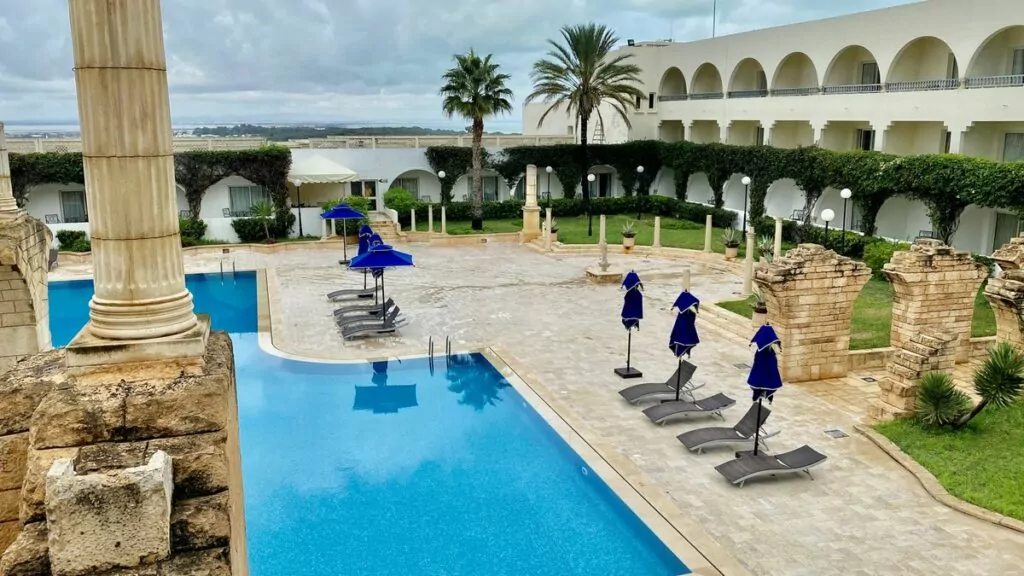
More to see and do in the neighbourhood
Not far from Carthage is the charming little blue-and-white town. Sidi Bou Said, which you won't want to miss. It is also interesting to discover the capital Tunis with its bazaars and old medina, which is also a UNESCO World Heritage Site. For those who want to enjoy the sun and swimming, there are also places like Hammamet, Sousse and Monastir.
Visiting El Djem in Tunisia - Amphitheatre and World Heritage Site
Visiting El Djem in Tunisia is fascinating! We have just spent a week in...
Thalassotherapy in Tunisia - Visits to two Thalasso & spas
We have tested thalassotherapy in Tunisia, which is a treatment that utilises...
Tozeur in Tunisia - oases, adventure and Star Wars
Located in the western part of Tunisia, Tozeur serves as a starting point for desert adventures and...
Boat trip to the Kuriat Islands in Tunisia - excursion from Monastir
Last summer we went on a boat trip to the Kuriat Islands, located off Monastir in Tunisia....
Alleys and bazaars in Tunis - shopping and people watching
We are still on the ground in Tunisia, but our journey is coming to an end...
Facts about Tunisia - 30 things you (may) not know
Facts about Tunisia! Tunisia is known for its Roman ruins, among other things, and for...
Living in tents in Tunisia - under the stars in the Sahara
Living in a tent in Tunisia is an experience. We stayed one night in a...
Quad biking in Tunisia - speedy experience in the Sahara
Quad biking in Tunisia is a wonderful experience. We went on a...
What to do in Tunisia - 25 sights and experiences
What to see and do in Tunisia? This glorious Mediterranean country is perfect for sunbathing and...
Sidi Bou Said in Tunisia - the blue and white city
Sidi Bou Said in Tunisia is a small Mediterranean town known for its charming neighbourhoods and...
Djerbahood on the island of Djerba - amazing street art in Tunisia
Djerbahood on the island of Djerba in Tunisia offers charming neighbourhoods and amazing street art....
Matmata in Tunisia - cave houses, Star Wars, viewpoints
Matmata in Tunisia is a small Berber village in southern Tunisia, where people have traditionally...
What to do in Hammamet, Tunisia - 13 tips
What to do in Hammamet, Tunisia? Hammamet is a Tunisian Mediterranean resort that is...
Beer and wine culture in Tunisia
Guest writer: Jonathan Gharbi de Maré You might think of sunny beaches, golf and good food, but...
Things to do in Djerba, Tunisia - 12 tips for the holiday island
What to do in Djerba, Tunisia? Djerba is a Tunisian island suitable for...
Camel riding in Tunisia - an island tour at the gateway to the Sahara
Camel riding in Tunisia, what is it like? There are lots of camels (or dromedaries) in...
Things to do in Sousse, Tunisia - 15 tips
What to do in Sousse, Tunisia? Sousse is a delightful and exciting holiday resort...
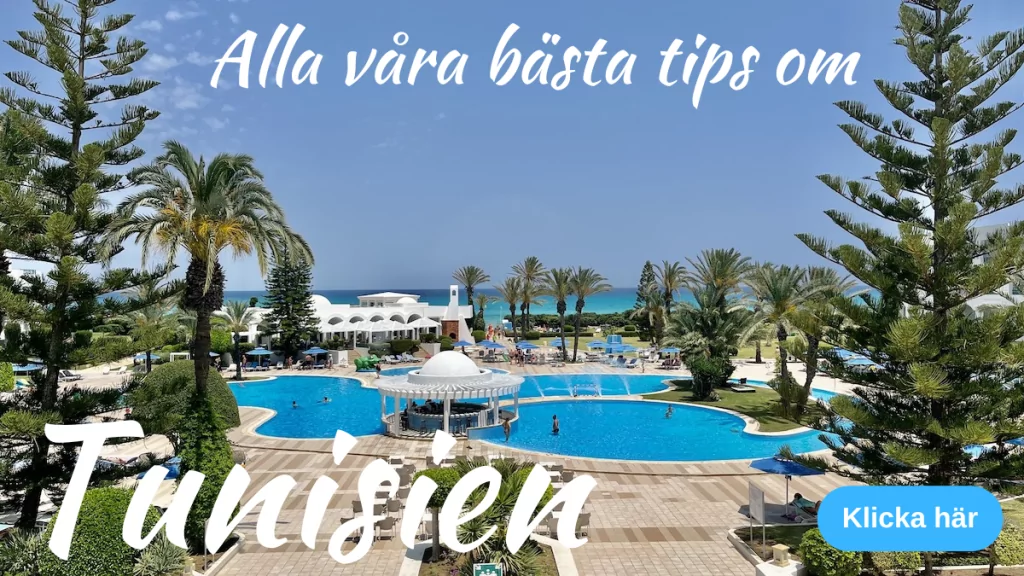
Have you visited Carthage?
Have you visited the archaeological site of Carthage in Tunisia? Do you like historical sights?
Facts about Carthage
- Country: Tunisia
- Location: The site is located in northern Tunisia, just north of the capital Tunis.
- Name: Carthage or Carthage. In French: Carthage. In English: Carthage.
History of Carthage
- 814 BC: Carthage was founded. Initially, the area was subordinate to the Phoenician city of Tyre.
- 650 BC: The city became independent, and established a hegemony (leadership position) over other Phoenician settlements in the Mediterranean.
- 200th century BC: The city's powerful reign lasted until this period. At its peak, it had political influence over most of the western Mediterranean. For much of the time, it was at odds with the Greeks in Sicily and the Roman Republic, leading to the Greco-Punic and Punic wars. The city also had to deal with the Berbers, the indigenous people of the area.
- 146 BC: After the third and final Punic War, Carthage was destroyed and occupied by Roman forces. Almost all the other Phoenician states that had previously been subject to the city fell into Roman hands.
Buildings in Carthage
Some of the main ruins that can be seen from the ancient city are:
- Antoninus bathhouse, from 145-165, is considered the largest in North Africa.
- The harbour is located on a canal and has been rebuilt by the Romans.
- Amphitheatres which is largely destroyed.
- The Tophet cemetery is a cave-like religious shrine dedicated to the god Baal-Hammon.
- Theatres which has been restored.
- Byrsakullen with towers and ruins of residential buildings.
- Column building shows the ruins of a building of unknown origin, perhaps the Gargilius bathhouse.

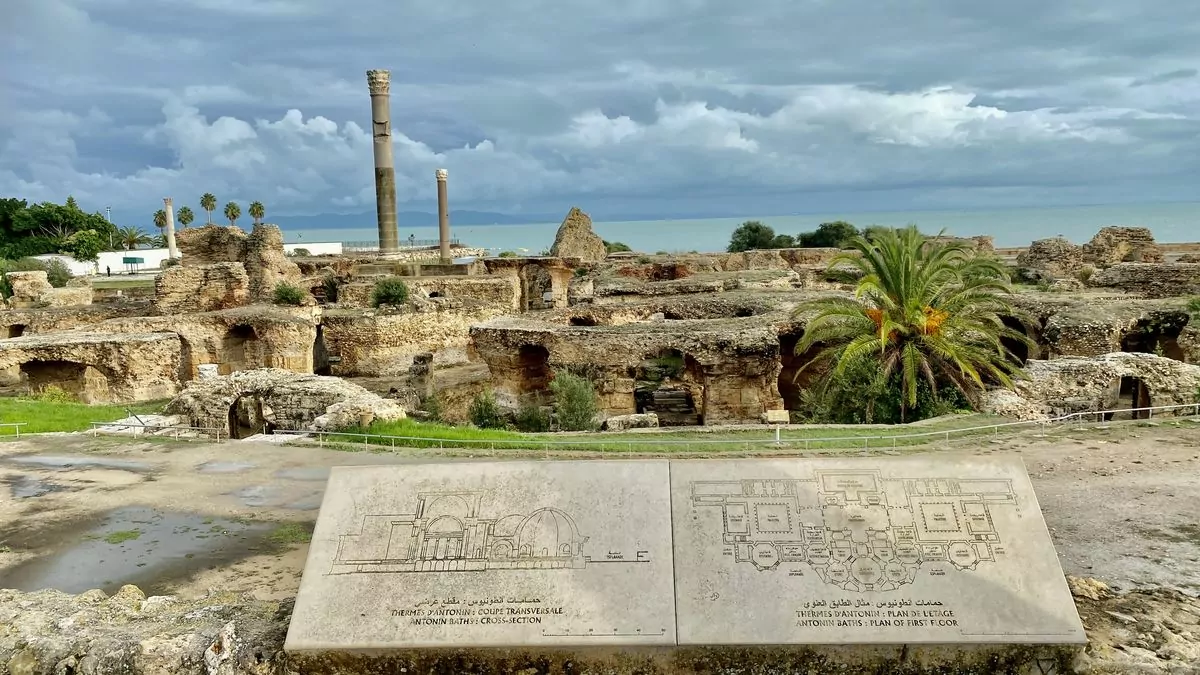







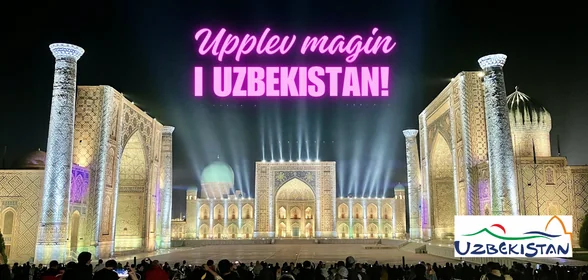

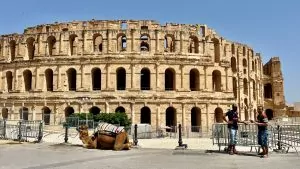
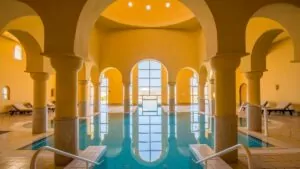
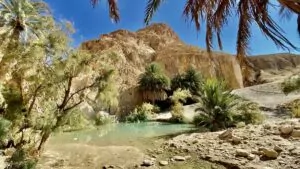
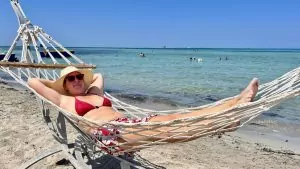
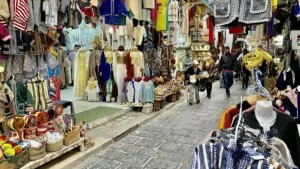
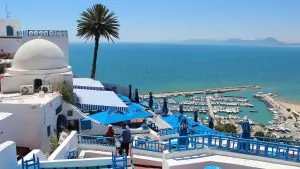
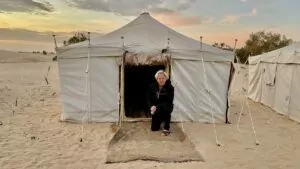
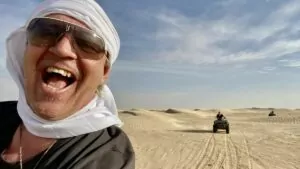
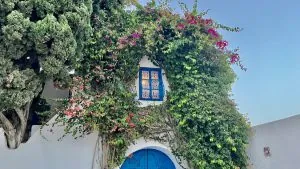
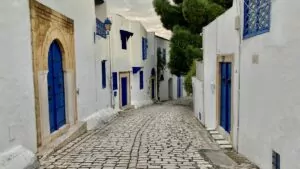
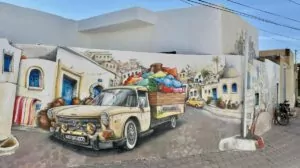
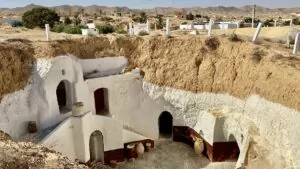
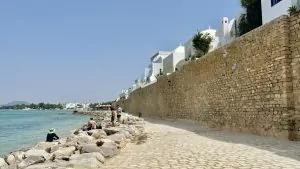
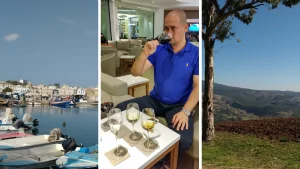
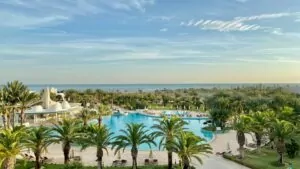
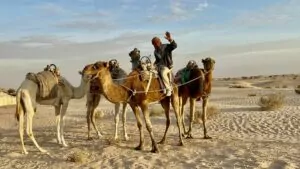
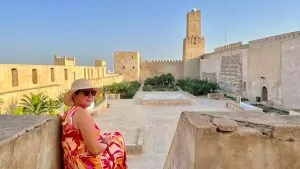
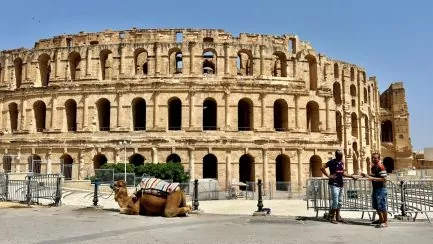
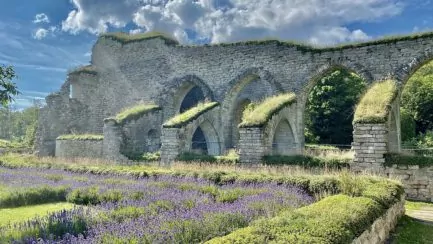
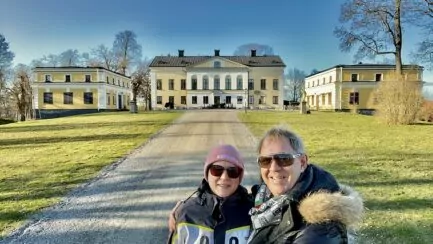



Kerstin Kraft says:
You write about interesting things but I miss your posts about the motorhome life you had before! Because surely you can go with a motorhome both in Tunisia Turkey and many other places you write about? You are unfortunately starting to resemble any travel writer! Missing your old orientation🚍🚐🍾
04 November 2021 - 13:33
Helena says:
Hi Kerstin! Thank you for your comment! Yes, life is not always easy to get together 😉 We have probably always alternated motorhome trips and other trips (with more motorhome in the summer months and more flights in the winter months), and this year we have been out and rolled with the motorhome for about four months in total (in Sweden). Taking the motorhome to Turkey or Tunisia would be extremely exciting (and we have been very inspired to do so!) but getting it together financially and time-wise (when you are employed) is not easy. Both in Turkey and Tunisia we looked at campsites (have just shown Tunisian camping on Insta and will show here too!), partly to be able to tell but also because we ourselves dream and carefully plan for the future ... ! But some conditions are required for it to happen ... Right now we got the chance to get away on these flights and then took the opportunity. Soon there will be a trip with a motorhome again (in Sweden)!
04 November 2021 - 13:43
BP says:
How different one can react to your posts. Kerstin misses the motorhome posts, while I think it's at least as fun to ride with you in Turkey and Tunisia. Considerably more "exotic" than Söderköping, so to speak.
I was fed Carthage and its history in high school. Then I thought it was boring as hell. But when I see your pictures and read your short and concise text, I would probably have been much more attentive if I had had your material in front of me.
04 November 2021 - 15:13
Monica says:
I think you have developed very much and write very well and informatively about history not least interspersed with today's finer photos as well. But okay, Söderköping pretty nice too but there is a whole world to discover and realise that people like us live in that whole world.
04 November 2021 - 16:37
Helena says:
Monica, thank you so much for your lovely comment! What you write means a lot! We like to mix, Söderköping with Africa, but then it will be a bit in periods depending on what opportunities we happen to have 😉.
05 November 2021 - 18:33
Helena says:
BP, thank you for your comment! I can understand that people have different opinions. Somewhere you want to make everyone happy, but it's impossible 😉 Glad you liked our report on Carthage! I like history, but I hate when it gets too long and complicated and you lose focus. My ambition is to find the core and write simply, if I can 🙂.
05 November 2021 - 18:31
Lena - gott för själen says:
There seem to be so many historically interesting places in Tunisia! I've never been there, but maybe one day I will. I like it a bit barren and dry. And beautiful doors! I usually take photos of that too.
Karm Lena
03 April 2022 - 9:13